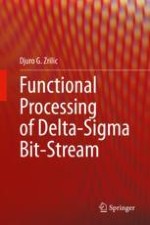2020 | OriginalPaper | Buchkapitel
7. A Δ-Σ Digital Stereo Multiplexing–Demultiplexing System
verfasst von : Djuro G. Zrilic
Erschienen in: Functional Processing of Delta-Sigma Bit-Stream
Aktivieren Sie unsere intelligente Suche, um passende Fachinhalte oder Patente zu finden.
Wählen Sie Textabschnitte aus um mit Künstlicher Intelligenz passenden Patente zu finden. powered by
Markieren Sie Textabschnitte, um KI-gestützt weitere passende Inhalte zu finden. powered by
